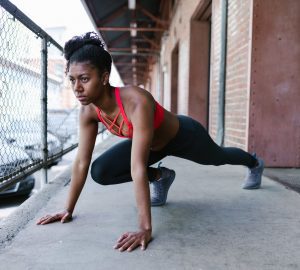Engaging in physical activity orchestrated by skeletal muscles, leading to the utilization of energy, comprises a spectrum extending beyond formal exercises and sports. This encompasses everyday activities such as walking, performing household chores, tending to a garden, and even the rhythmic joy of dancing.
Within the context of a comprehensive health paradigm that embraces physical, mental, and social facets of well-being, the focus transcends mere absence of disease. It revolves around nurturing the entirety of an individual, fostering a positive state of wellness.
Extensive scientific evidence unequivocally establishes that consistent physical activity serves as a formidable preventive measure against an array of chronic diseases and conditions. These encompass but are not limited to heart disease, diabetes, cancer, and osteoporosis. Beyond the prevention of maladies, regular physical activity emerges as a linchpin in the promotion of overall health and wellness. Indeed, it stands as one of the most pivotal lifestyle factors instrumental in disease prevention.
Historical Perspective
A. Early Beliefs and Practices
The benefits of physical activity and exercise have been recognized since ancient times. Ancient Greek physicians like Hippocrates and Galen prescribed exercise and sports participation for health and well-being. Early Chinese practices like Tai Chi integrated rhythmic movement, breathing, and meditation.
B. Evolution in Modern Healthcare
In the 19th and 20th centuries, physical activity became an established and systematic part of healthcare and disease prevention. This included medical gymnastics routines, the physical culture movement, and modern conceptualizations of exercise science and aerobic activity for cardiovascular health.
Understanding Complete Health
A. Physical Health
1. Cardiovascular Health – Regular physical activity has been shown to improve heart health and function, lower blood pressure, improve circulation, and optimize blood lipid profiles. It is one of the most effective lifestyle measures for boosting cardiovascular wellness.
2. Musculoskeletal Health – Exercise increases muscle strength, flexibility, and joint function. It helps maintain bone mineral density and strength to prevent osteoporosis. Physical activity improves balance, mobility, and coordination, reducing the risk of falls and fractures.
3. Respiratory Health – Being physically active enhances overall lung capacity and conditioning. It helps prevent respiratory illnesses and diseases like pneumonia.
B. Mental Health
1. Stress Reduction – Exercise is associated with lower stress hormones, improved stress resilience, and healthier coping mechanisms. It produces natural antidepressant and mood-elevating effects in the brain.
2. Mood Improvement – Physical activity stimulates the release of endorphins, dopamine, serotonin, and other chemicals that elevate mood. It reduces symptoms of anxiety and depression and enhances overall mental well-being.
3. Cognitive Function – Regular exercise improves memory, concentration, learning, focus, and decision-making. Remaining physically active helps maintain cognitive abilities into old age and reduces dementia risk.
C. Social Health
1. Community Engagement – Participation in sports leagues, walking groups, recreational classes, and other physical activities facilitates social connections and community engagement.
2. Social Support Networks – Building relationships and support networks with others around physical activity and exercise fosters emotional health and well-being.
3. Team Sports and Group Activities – Participating in team sports, dance classes, and group exercise builds teamwork, camaraderie, and a sense of belonging.
Physical Activity and Disease Prevention
A. Cardiovascular Diseases
1. Prevention of Hypertension, Heart Disease, and Stroke – Regular exercise helps manage blood pressure, cholesterol levels, and body weight, which significantly reduces the risk of cardiovascular conditions like hypertension, coronary heart disease, and stroke.
B. Metabolic Disorders
1. Diabetes Management – Physical activity has been shown to help regulate blood glucose levels and increase insulin sensitivity, which is critical for preventing and managing type 2 diabetes.
2. Obesity Prevention – Exercise helps balance calorie intake and expenditure, which is fundamental for maintaining a healthy body weight and preventing obesity.
C. Musculoskeletal Disorders
1. Osteoporosis Prevention – Weight-bearing and resistance training activities promote bone strength and density throughout life, preventing bone loss and reducing fracture risk.
2. Arthritis Management – Low-impact physical activities like walking, swimming, and yoga improve joint flexibility, function, and mobility, helping manage arthritis symptoms.
D. Mental Health Disorders
1. Anxiety and Depression – Research confirms the natural mood-elevating effects of physical activity that can help prevent and reduce the incidence of anxiety and depression.
2. Dementia and Cognitive Decline – Regular exercise enhances blood flow and oxygenation to the brain and stimulates the growth of new brain cells and connections, helping maintain cognitive function.
E. Cancer Prevention
1. Breast, Colon, and Other Cancers – Emerging research indicates physical activity may help prevent certain cancers, like breast and colon cancer, by regulating sex and metabolic hormones, immune function, and other mechanisms.
Guidelines and Recommendations
A. Global Health Guidelines
The World Health Organization, CDC, and other authorities recommend at least 150 minutes per week of moderate-intensity physical activity, plus muscle-strengthening exercise twice a week for comprehensive health benefits and disease prevention.
B. Tailored Approaches
Exercise programs should be personalized based on an individual’s health status, fitness level, abilities, injury history, and personal preferences to maximize adherence and outcomes. To ensure these programs are effective and suited to individual needs, periodic reassessments are crucial. These reassessments help tailor programs over time, adapting to changes in physical condition and personal goals.
For those seeking expert guidance and a structured approach, you can book an appointment with Complete Wellness. This enables access to professional advice and support, ensuring that exercise routines are not only effective but also safe and enjoyable.
C. Incorporating Into Daily Life
Being physically active throughout the day with walking, taking the stairs, active chores and errands, and frequent movement breaks can help meet activity goals.
Challenges and Barriers to Physical Activity
A. Modern Lifestyle and Sedentarism
The proliferation of screen time, passive entertainment options, and reliance on automobile travel promotes inactivity and poor fitness. Sedentary jobs also reduce physical demands.
B. Socioeconomic Factors
Lack of financial resources, unsafe neighborhoods, lack of childcare support, and overwork are challenges that can discourage regular activity, especially in disadvantaged populations.
C. Physical and Mental Health Conditions
Disabilities, chronic illnesses, injuries, pain conditions, depression, and anxiety can make engaging in physical activity more difficult. However, a tailored approach can often overcome these barriers.
D. Environmental Factors
Auto-centric urban infrastructure centered around cars, lack of parks and recreation facilities, and poor walkability limit access and opportunities for physical activity in many communities.
Strategies for Promoting Physical Activity
A. Public Health Initiatives
Community-wide campaigns, health education programs, media promotion, and messaging by influencers help shift social norms around activity.
B. Workplace Wellness Programs
On-site fitness facilities, flexible break policies, active workstations, stretching breaks, walking meetings, and workplace fitness challenges promote activity.
C. Community-Based Programs and Facilities
Public recreation centers, parks, trails, bike lanes, walkable development, and sports leagues improve physical activity access and participation.
D. Technology and Digital Tools
Wearable devices, smartphone apps and exercise trackers, social fitness networks, online classes, and virtual reality games can all motivate and support activity.
The Future of Physical Activity in Health and Disease Prevention
A. Emerging Research and Trends
Growing scientific evidence continues to demonstrate the preventive and therapeutic benefits of physical activity for brain health, immune function, cancer prevention, mental health, pain management, sexual function, and overall well-being.
B. Integrative Approaches in Healthcare
Lifestyle medicine and health coaching are increasingly incorporating physical activity prescription and counseling as standard practice for overall patient health, similar to medication and surgery.
C. Technology and Innovation
Wearable sensors, machine learning, and digital fitness platforms will enable hyper-personalized activity and workout recommendations tailored to an individual’s needs and biometrics. Virtual reality and gamification can further enhance adherence.
Conclusion
Regular physical activity is vital for complete health and well-being, with benefits for cardiovascular, musculoskeletal, mental, social, and overall health. It is one of the most important lifestyle factors for preventing chronic disease.
Despite modern barriers to activity, prioritizing regular exercise and movement remains critical for health and demands renewed efforts at both the individual and societal levels.
We must make physical activity a regular habit and prioritize movement in our daily lives. Additionally, creating supportive, activity-promoting environments where we live, work, learn, and play enables broader engagement in physical activity across the community.









